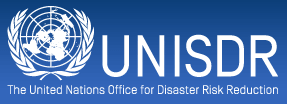The UN Office for Disaster Risk Reduction (UNISDR) convened the Science and Technology Conference on the Implementation of the Sendai Framework for Disaster Risk Reduction (DRR) 2015-2030, which aimed to harness the power of science and technology in implementing the Sendai Framework.
The event opened with a tribute to the hundreds of scientists who have contributed their time to research climate change and its impacts.
 29 January 2016: The UN Office for Disaster Risk Reduction (UNISDR) convened the Science and Technology Conference on the Implementation of the Sendai Framework for Disaster Risk Reduction (DRR) 2015-2030, which aimed to harness the power of science and technology in implementing the Sendai Framework. The event opened with a tribute to the hundreds of scientists who have contributed their time to research climate change and its impacts.
29 January 2016: The UN Office for Disaster Risk Reduction (UNISDR) convened the Science and Technology Conference on the Implementation of the Sendai Framework for Disaster Risk Reduction (DRR) 2015-2030, which aimed to harness the power of science and technology in implementing the Sendai Framework. The event opened with a tribute to the hundreds of scientists who have contributed their time to research climate change and its impacts.
More than 1,000 scientists, experts, policymakers, researchers and representatives of the business community attended the Conference, which took place in Geneva, Switzerland, from 27-29 January 2016.
The Conference culminated with the launch of the UNISDR Science and Technology Partnership and agreement on a Science and Technology Roadmap for implementing the Framework, which will be finalized by 1 March 2016.
The Partnership is comprised of over 65 agencies, networks and organizations, with others expected to join by the end of February 2016. According to UNISDR, during the Sendai Conference in March 2015, the science and technical community had made voluntary commitments to establish such an international partnership to mobilize science for action on DRR and resilience building. The Partnership will help: reduce disaster risk, save lives and reduce economic losses; achieve the targets set out in the Framework; generate political and social commitment to invest in DRR; and refine the roadmap to assist governments and other stakeholders to implement the Framework and monitor progress.
The Young Scientists Platform on DRR, which sets out an intergenerational science agenda illustrating the ambition of youth in implementing the Sendai Framework, was also launched by the UN Major Group for Children and Youth.
Addressing the Conference, Robert Glasser, Special Representative of the UN Secretary-General for DRR and Head of UNISDR, explained that the conference aimed to explore the ways science can help achieve the Sendai targets, including through improved risk assessment, strengthened standards, data collection and the deployment of efficient early warning systems. Glasser underlined that the scientific and technical communities can support decisions makers with evidence, risk information and solutions. Recalling that the adoption of Paris Agreement on climate change and of the sustainable development agenda highlight how technology can help disseminate early warnings and reduce mortality in disasters, he stressed the importance of DRR in achieving sustainable development. He further noted how DRR science can support work in 2016, including related to the World Humanitarian Summit and Habitat III.
Glaser called for: including users in the earliest stages of developing research and technology; mobilizing scientific and technical community needs to design and standardize metrics and methodologies to support implementation; and adopting a multi-hazard perspective.
Alasdair Hainsworth, World Meteorological Organization (WMO), emphasized that early warning systems are “doomed to fail” if they do not make sense to the very people that they are meant to help, stressing the importance of ensuring that scientific information is communicated in a manner that non-specialists can understand.
Ian Clark, European Commission, said DRR is “an investment, not a cost,” noting every dollar invested in disaster preparedness saves seven dollars in disaster aftermath.
Participants also stressed, inter alia, the importance of: “breaking the silos between a plethora of agencies” to help curb the threat of disasters; strengthening platforms that bring scientists and policymakers together; issuing timely, accurate early warning alerts through credible and reliable sources, such as an identifiable government agency; mainstreaming DRR and science into decision making; establishing “a single command entity” for disaster management; and providing climate information for farmers for agriculture and disaster preparedness.
The Conference was organized by, inter alia, the UNISDR Scientific and Technical Advisory Group (STAG). [Conference Website] [UNISDR Head Opening Statement] [UNISDR Head Closing Statement] [UN Press Release] [UNISDR Press Release, 26 January] [UNISDR Press Release, 27 January] [UNISDR Press Release, 28 January] [UNISDR Press Release, Tribute Paid to Climate Scientists]